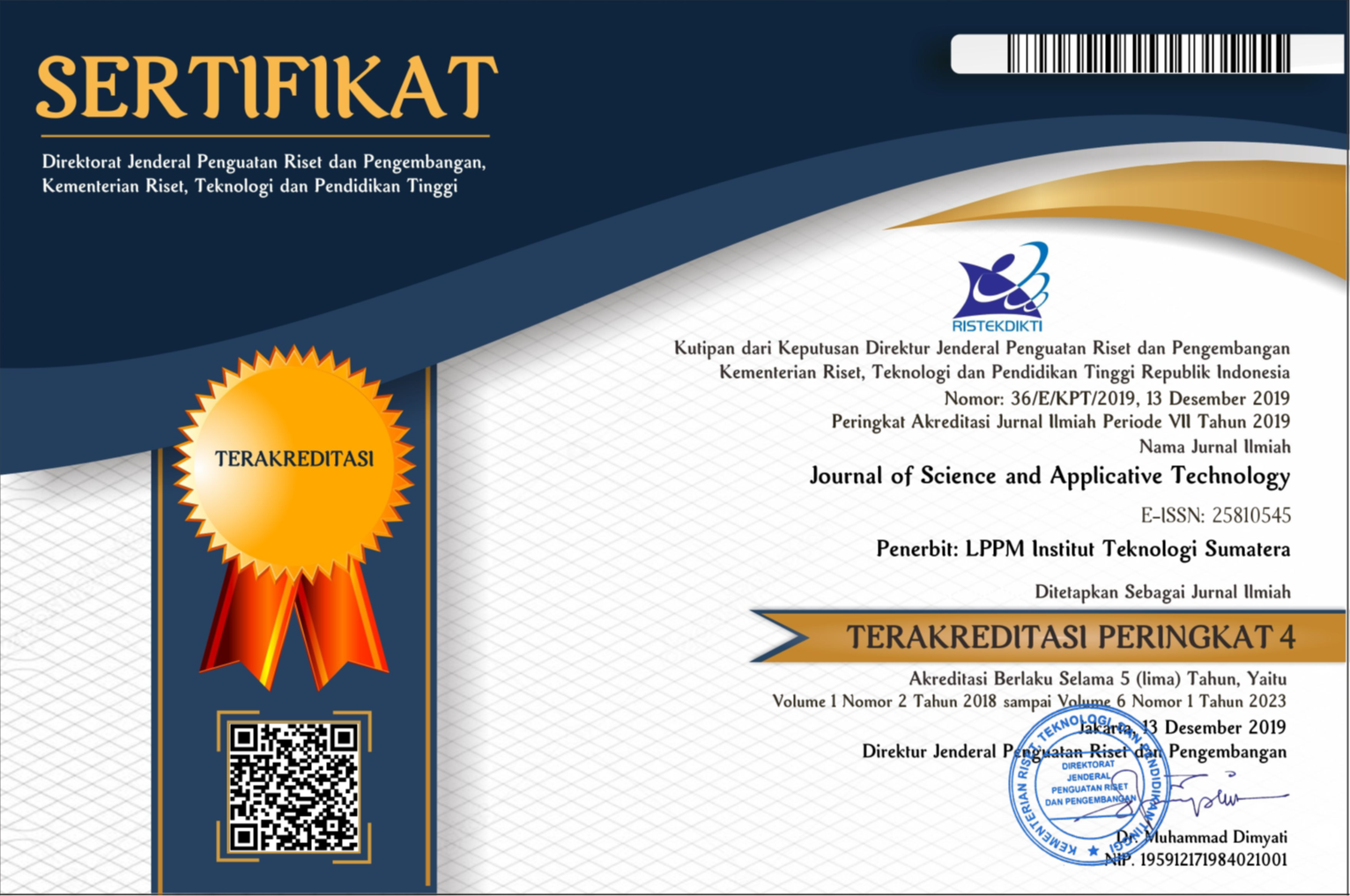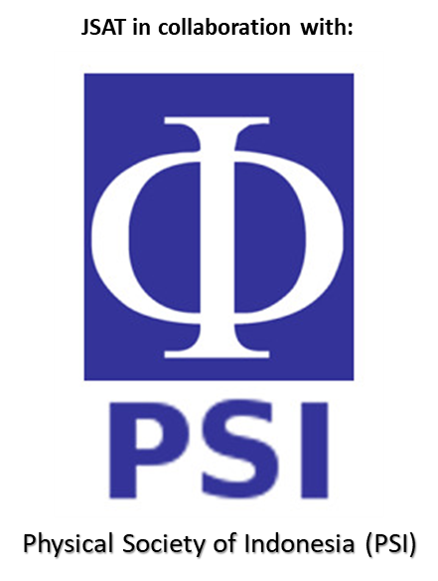Studi Inhibisi Korosi Pipa Sistem Pendingin Sekunder RSG-GAS BATAN Oleh Karboksimetil Kitosan
Abstract
Corrosion is one of the unavoidable problems in nuclear reactor cooling systems that use water as a cooling medium. secondary cooling systemThe Reaktor Serba Guna–G.A. Siwabessy (RSG-GAS) is an open recirculation cooling system that uses carbon steel pipes for water delivery. Due to the obvious open recirculation cooling system, components in the system interact with oxygen in the air, resulting in corrosion. Corrosion control in the RSG-GAS has been accomplished through the continuous injection of zinc phosphate (ZnPO4) inorganic inhibitors, but the use of these inhibitors can contribute to environmental pollution and health issues. To resolve these concerns, environmentally-friendly corrosion inhibitors such as carboxymethyl chitosan have been used. CMC (carboxymethyl chitosan) is widely used because it is more amphiprotic than other chitosan derivatives. Because of the number of functional groups in carboxymethyl chitosan, it is an effective corrosion inhibitor. The corrosion inhibition test by CMC on carbon steel in the secondary cooling water system was performed using a weight-loss method in this study with variations of 0, 1, and 3 g CMC. The steel material's composition is 0.23% C, 0.17% Si, 0.008% P, 0.004% S, 0.012% Cr, and 0.037% Mn. According to the study, the corrosion rate generated at variations of 0, 1, and 3 g CMC is 8.237, 5,645, and 5,113 mpy, respectively. According to the data, the addition of CMC can reduce the weight loss of steel due to corrosion because CMC contains many amphiprotic groups that are adsorbed on the surface in half-full d Fe orbitals.
Downloads
References
[2] Febrianto, G.R. Sunaryo, S.L. Butarbutar, “Analisis laju korosi dengan penambahan inhibitor korosi pada pipa sekunder reaktor RSG-GAS”, Prosiding Seminar Nasional VI, SDM Teknologi Nuklir, 2010, hal. 615-620, Yogyakarta, 2010.
[3] D. Restiawan, Harmami, “Kinina sebagai inhibitor korosi baja SS 304 dalam media 1M H2SO4 dengan variasi suhu”, Jurnal Sains dan Seni ITS, 2(2), 34-37, 2013.
[4] Safitra, E.R, “Studi Sistem Injeksi Inhibitor Korosi terhadap Kandungan Orthofosfat dan Seng sebagai Parameter Kendali Korosi pada Sistem Pendingin Sekunder RSG-GAS”, Journal of Science and Applicative Technology 1 (2), 102-105. 2018
[5] R.S. Irianty, M.P. Sembiring, “Pengaruh Konsentrasi Inhibitor Ekstrak Daun Gambir Dengan Pelarut Etanol-Air Terhadap Laju Korosi Besi Pada Air Laut”, J. Ris. Kim, Vol.5 No.2, 2012.
[6] Y. Ludiana, S. Handani, “Pengaruh Konsentrasi Inhibitor Ekstrak Daun Teh (Camelia Sinensis) Terhadap Laju Korosi Baja Karbon Schedule 40 Grade B ERW, Jurnal Fisika Unand. Vol. 1, No. 1, 2012.
[7] M. Erna, Herdini., Abdullah., Suharmin, “Studi Inhibisi Korosi Karboksimetil Kitosan pada Permukaan Baja Lunak dalam H2SO4.”, Valensi. Vol.4, No.1, Hal.30-35, 2014.
[8] X. Xue, L. Li, and J. He, “The Performance of Carboxylmethyl Chitosan in Wash Off Reactive Dyiengs”. Carbohydrate Polimer. 75: 203-207, 2009.
[9] V. K. Mourya, N. N. Inamdar, and A. Tiwari, “Carboxymethyl Chitosan and its Applications”. Government College of Pharmacy, India. Adv. Mat. Lett. 2010. 1(1):11-33, 2010.
[10] Graedel T.E., Leygraf, C. Scenario's for Atmospheric Corrosion in the 2lst Century.The Electochemical Society. http:// www.potentiostat.corn.Atrnospheric. 1 (Mei 2006). 2001
[11] Ajiriyanto. M.K, Kriswarini. R, Yanlinastuti, Lestari, D.E, “Analisis Korosi Pipa Pendingin Sekunder RSG-GAS Dengan Teknik Electrochemical Impedance Spectroscopy”, Urania. Vol. 24 No.2, Juni 2018: 73−134
Copyright (c) 2022 Journal of Science and Applicative Technology

This work is licensed under a Creative Commons Attribution-NonCommercial 4.0 International License.
All the content on Journal of Science and Applicative Technology (JSAT) may be used under the terms of the Creative Commons Attribution-NonCommercial 4.0 International License.
You are free to:
- Share - copy and redistribute the material in any medium or format
- Adapt - remix, transform, and build upon the material
Under the following terms:
- Attribution - You must give appropriate credit, provide a link to the license, and indicate if changes were made. You may do so in any reasonable manner, but not in any way that suggests the licensor endorses you or your use.
- NonCommercial - You may not use the material for commercial purposes.
- No additional restrictions - You may not apply legal terms or technological measures that legally restrict others from doing anything the license permits.





















